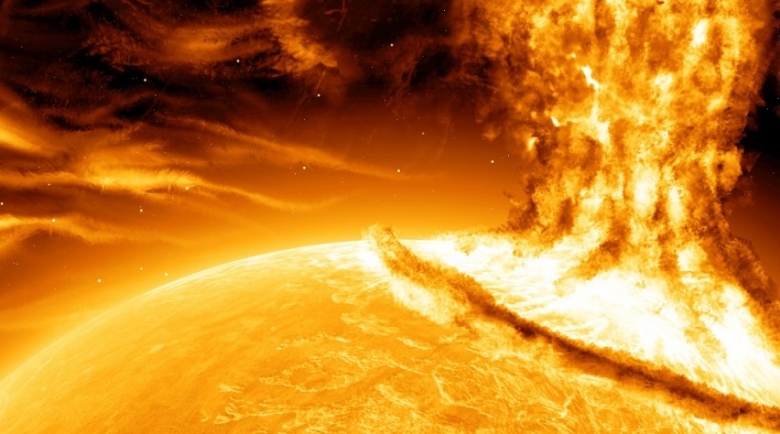
The Fusion process will keep the sun shining steadily for about 5 billion more years, but when stars exhaust their nuclear fuel, their deaths can lead to pyrotechnics. Stars over eight times more massive than the sun die violently in an explosion called a supernova.
Supernovae happen across the Milky Way only a few times a century, and these violent explosions are usually remote enough that people here on Earth don’t notice.
For a dying star to have any effect on life on our planet, it would have to go supernova within 100 light years from Earth.
Most of these cataclysms are remote, but when they occur closer to home they can pose a threat to life on Earth. Very few stars are massive enough to die in a supernova.
At one supernova per 50 years, and with 100 billion galaxies in the universe, somewhere in the universe a supernova explodes every hundredth of a second. The dying star also releases a torrent of high-energy particles in the form of cosmic rays: subatomic particles moving at close to the speed of light.
Supernovae in the Milky Way are rare, but a few have been close enough to Earth that historical records discuss them. Observers around the world saw a bright star suddenly appear in 1006 AD. Astronomers later matched it to a supernova 7,200 light years away.
In 1054 AD, Chinese astronomers recorded a star visible in the daytime sky that astronomers subsequently identified as a supernova 6,500 light years away. At 600 light years away, the red supergiant Betelgeuse in the constellation of Orion is the nearest massive star getting close to the end of its life.
If a star goes supernova close enough to Earth, the gamma-ray radiation could damage some of the planetary protection that allows life to thrive on Earth.
If a supernova goes off 100 light years away, it takes 100 years for us to see it. Astronomers have found evidence of a supernova 300 light years away that exploded 2.5 million years ago.
Radiation from gamma rays eroded the ozone layer, which protects life on Earth from the sun’s harmful radiation. A supernova within 30 light years would be catastrophic, severely depleting the ozone layer, disrupting the marine food chain and likely causing mass extinction.
Some astronomers guess that nearby supernovae triggered a series of mass extinctions 360 to 375 million years ago. Luckily, these events happen within 30 light years only every few hundred million years.
Left behind after a supernova explosion, neutron stars are city-size balls of matter with the density of an atomic nucleus, so 300 trillion times denser than the sun.
If the Earth were in the line of fire of a gamma-ray burst within 10,000 light years, or 10 percent of the diameter of the galaxy, the burst would severely damage the ozone layer.
Gamma-ray bursts may not hold an imminent threat to life on Earth, but over very long time scales, bursts will inevitably hit the Earth.
The odds of a gamma-ray burst triggering a mass extinction are 50 percent in the past 500 million years and 90 percent in the 4 billion years since there has been life on Earth.
Astronomers have argued that a gamma-ray burst caused the first mass extinction 440 million years ago, when 60 percent of all marine creatures disappeared.
The radiation caused a sudden disturbance to the Earth’s ionosphere, even though the source was an explosion nearly two billion light years away.
Life on Earth was unaffected, but the fact that it altered the ionosphere is sobering-a similar burst in the Milky Way would be a million times brighter.
